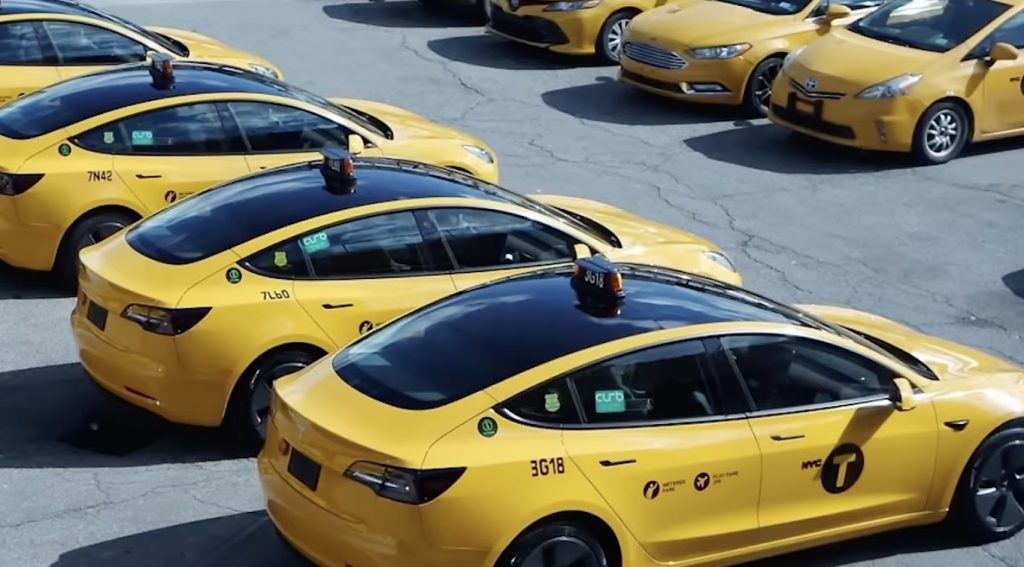
Robotaxi launch: Tesla’s CEO Elon Musk will be revealing the Cybercab, its robotaxi, at Warner Bros. Hollywood Studio this evening. This has been years in the making, and many questions are expected to be asked. Musk hopes that the event will help keep Tesla’s stock at a higher level. The company will discuss the autonomous Tesla ride-hailing platform. Tesla is sticking with its plan to encourage owners to to make income by purchasing more then Cybercab and to place them on a ride-hailing network of robotaxis. Teslerati thinks the the EV maker will do more than just reveal the Cybercab tonight. It might include a $25,000 mass-market EV, a Robovan, and even the Roadster, according to the rumor mill. Tesla has said that the Cybercab and the $25,000 electric car will be built on the same platform, according to The Tesla Space.
GM’s LFP cells: General Motors on Tuesday said it plans to use cost-cutting lithium iron phosphate (LFP) battery cells for future EV models. GM executives had said at an investor conference that LFP cells would combine with other changes to packaging and manufacturing to cut $6,000 from the cost of making EVs, compared to current models. The new Chevy Bolt EV is expected to arrive in 2025 as a 2026 model, although it’s unclear if the LFP-powered version will be available at launch.
Separately, GM President Mark Reuss said the next-gen 2026 Bolt EV will be priced ‘only slightly higher than the 2023 Bolt,’ which started at $27,495 with shipping, and it will be part of a ‘vehicle family.’
SEMA and NTEA oppose CARB rules: The Specialty Equipment Market Association (SEMA) and NTEA – The Work Truck Association filed suit in the US District Court’s Eastern District of California against the California Air Resources Board (CARB), seeking immediate declaratory and injunctive relief to stop electric vehicle mandates CARB intends to implement through its Advanced Clean Fleets (ACF) regulations. The two organizations say it far exceeds the state’s constitutional and state authority, and it will have a dire effect on an industry that has historically made major moves to bring newer, cleaner versions of trucks and other commercial vehicles to market.
Lessons learned at IAA: NACFE says that IAA 2024 in Hannover, Germany, was quite an interesting show. On the exhibit floor were a variety of alternative-fueled vehicles from a host of countries, including China, Italy, Germany, The Netherlands, and more. Several countries are working on decarbonizing their transportation industries. Though the technology and regulations may differ, NACFE found it valuable to learn more about what’s going on in that area.
DTNA working with J.B. Hunt: Daimler Truck North America is integrating a battery electric Freightliner eCascadia into its aftermarket operations with long-time associate J.B. Hunt Transport Inc. It will be part of J.B. Hunt’s fleet and deliver aftermarket parts from DTNA’s parts distribution center (PDC) in Phoenix to multiple dealers along a dedicated route, covering approximately 100 miles daily. DTNA says its first all-electric route in the DTNA aftermarket parts distribution network; and it fits well in its targets for reducing carbon emissions and setting a precedent for sustainable outbound logistics operations.
248 DC fast chargers: ChargePoint has received awards through its partners of more than $19 million to deploy 248 DC fast-charging ports at 45 sites along California highways. The awards were approved recently by the California Energy Commission (CEC) and California Department of Transportation as part of the state’s first tranche of National Electric Vehicle Infrastructure (NEVI) program funds.
Understanding battery cells: Here’s an Intertek resource on understanding battery cell design, manufacturing quality, and degradation. Check out the Top-12 FAQ sheet on Battery Cell Teardown (also known as Battery Cell Autopsy or Disassembly). It’s a way to help identify manufacturing defects, assess material composition, and uncover aging and degradation mechanisms, Intertek says.
Nuclear energy for data centers: While nuclear power as a clean energy source continues to lack support from certain stakeholders, it’s being taken very seriously by some major players. Amazon and Microsoft each inked major deals this year with nuclear power plants in the U.S. to power their energy-intensive data centers. It has something to do with new AI data centers that need a lot of energy to run.
Mobility market growth: The shared mobility service market, which was valued at $380.2 billion in 2023, its expected to grow at a compound annual growth rate of 15.6% during 2025-2030, according to a ResearchAndMarkets.com study. That’s expected to come from technological advancements, urbanization, and changing consumer preferences. Choices are expanding too for ride-sharing, car-sharing, bike-sharing, and scooter-sharing. Companies profiled in the study include Car2Go, Didi Chuxing, Grab, Lyft, Docomo Bike Share, Meitetsu Kyosho, Orix, Ola, BlaBlaCar, and Uber.
CA bill on renewable hydrogen: Governor Gavin Newsom signed SB 1420 (Anna Caballero, D-Merced), a California Renewable Transportation Alliance-supported measure to streamline permitting for renewable hydrogen production facilities. It facilitates centralized permitting and expedited review under the California Environmental Quality Act (CEQA).
Confessions of a Numbers Nerd: As mentioned in the last issue, I’ve started a Substack column tied into my new book, which has been published. It goes back to how I got into data analytics as an editor covering fleet management, car rental, and used vehicle market trends. More recently, it might be about looking at how it’s going between Tesla and BYD for global market leadership.



